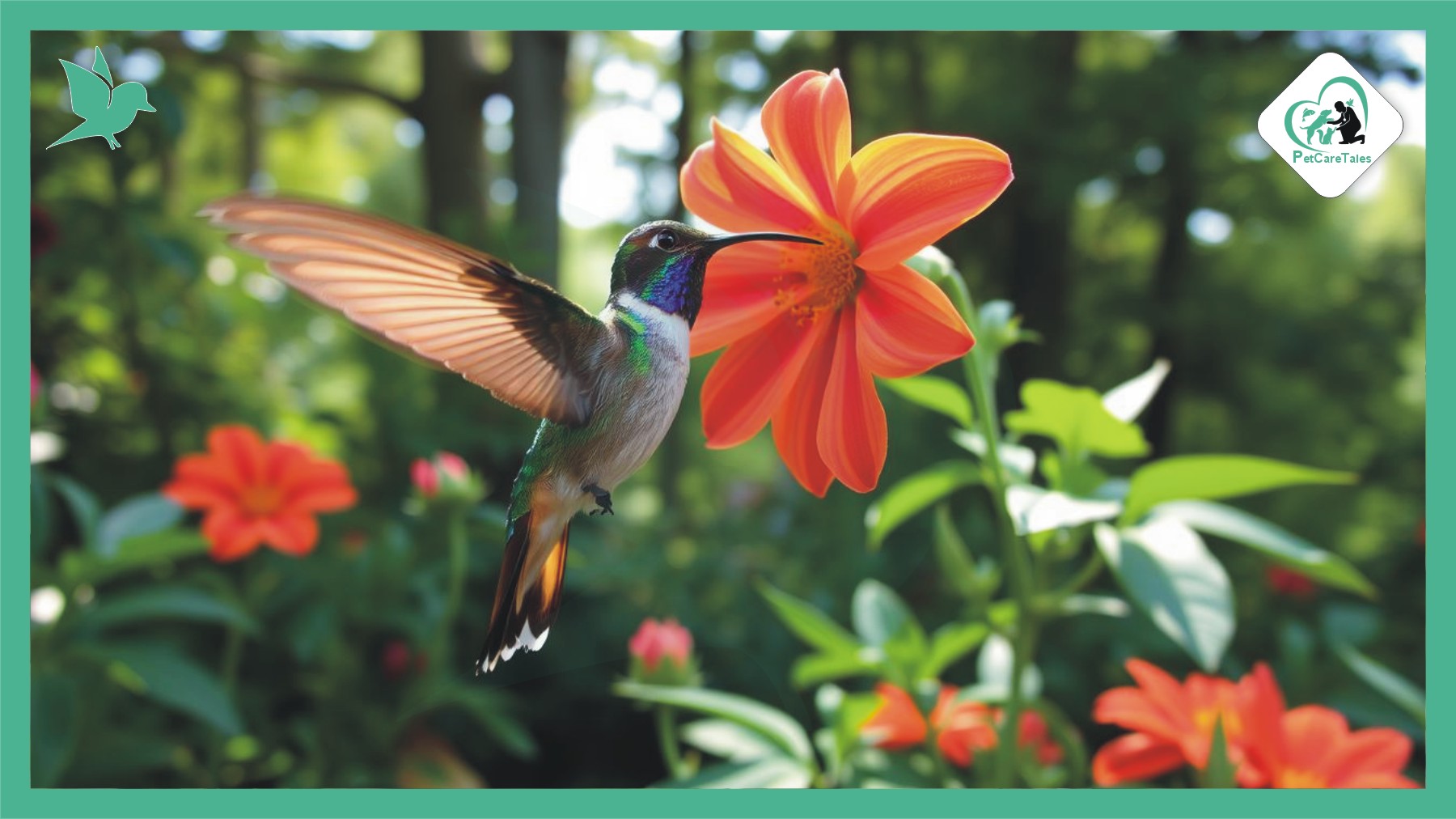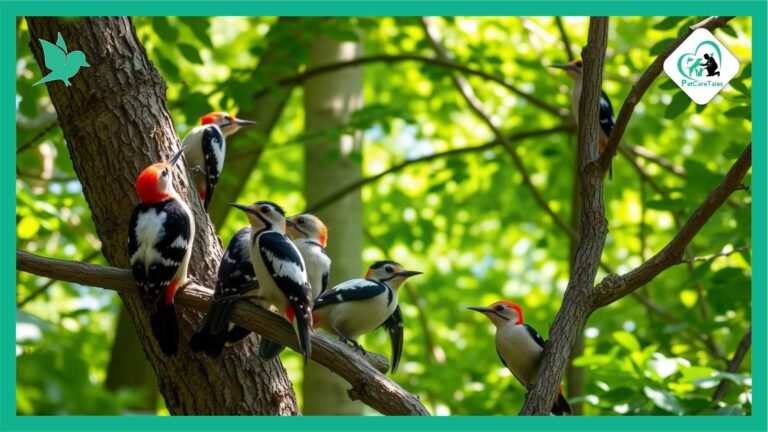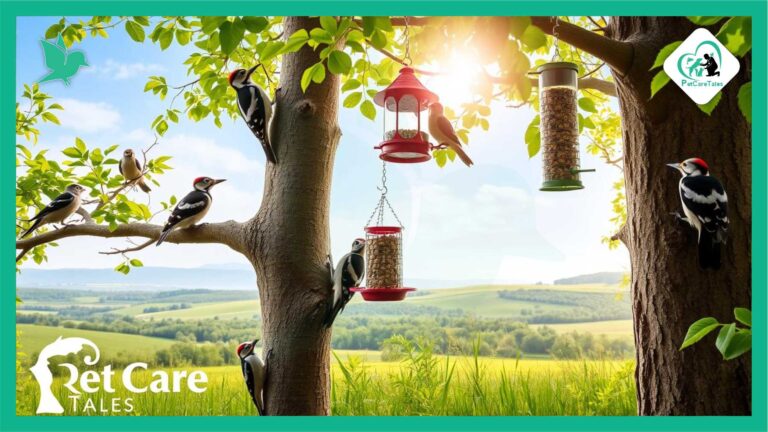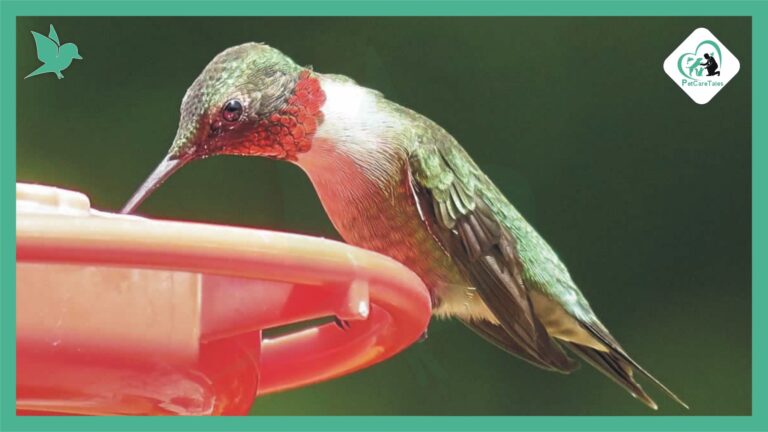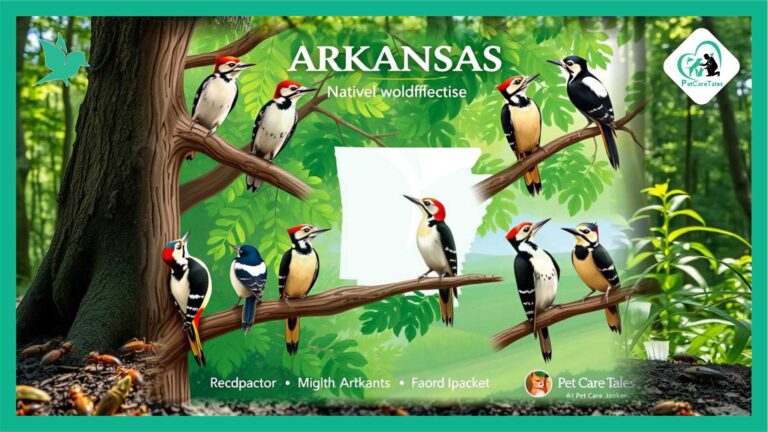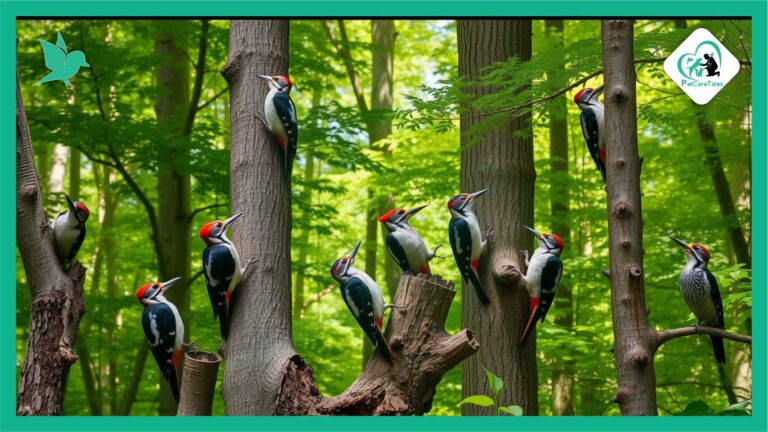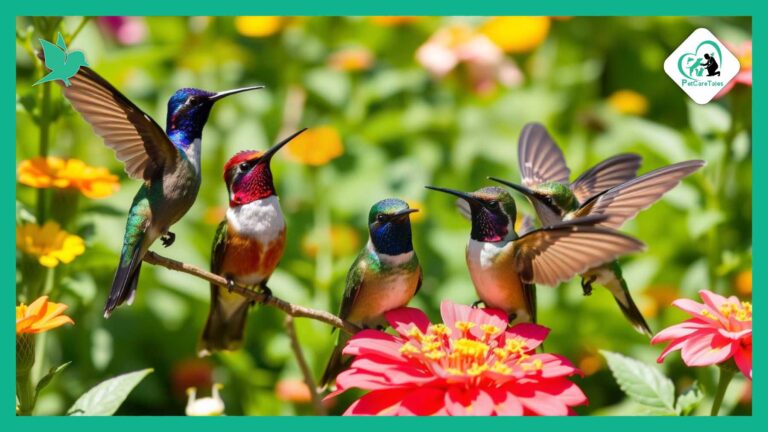6 Fascinating Hummingbird in Michigan: Common & Rare Birds
Did you know over 360 Hummingbird in Michigan species exist worldwide? Yet, only five have been seen in Michigan. This shows how special hummingbirds are in the Great Lakes state. Only one species is often seen here.
These amazing birds can hover and have bright colors. They help pollinate plants and are loved by bird watchers. We’ll look at Michigan’s hummingbird species, both common and rare. We’ll explore their homes, how they act, and what makes them unique.
Key Takeaways
- Michigan is home to five recorded hummingbird species, with Ruby-Throated being the most common.
- Many hummingbirds are essential pollinators, aiding the growth of various plants.
- Ruby-throated hummingbirds can double their body weight to prepare for migration across the Gulf of Mexico.
- Rufous hummingbirds undertake an impressive 4,000-mile migration journey.
- Rare sightings of white-eared and broad-billed hummingbirds have occurred in Michigan.
- Understanding their needs can help attract these vibrant birds to your garden.
Introduction to Hummingbirds in Michigan
Michigan is home to many hummingbirds, mostly the Ruby-throated Hummingbird. This bird is the only common one in the state. Seeing hummingbirds in Michigan is thrilling for bird lovers and nature fans.
The Ruby-throated Hummingbird comes to Michigan in April and stays until November. This gives people lots of chances to see them. The Upper Peninsula is great for spotting these birds because of its natural beauty.
These birds eat a lot of nectar every day. You might see them flying from flower to flower. The males have bright throat patches that they show off when they’re looking for a mate.
Michigan also sees rare hummingbirds like the Rufous Hummingbird in the fall. Sometimes, other rare birds show up too. These sightings make bird watching in Michigan even more exciting.
What Makes Hummingbirds Unique?
Hummingbirds are amazing birds that catch our eye. They are very agile and have special features. They are important in their homes.
Let’s look at what makes them special. We’ll talk about their looks, how they eat, and how they travel. This will help us see why they are so special, especially in Michigan.
Physical Characteristics
These birds are very small. The bee hummingbird weighs only 0.08 ounces. They have bright colors that amaze us.
Their long, thin beaks help them get nectar from flowers. This is a big part of their food. Their design lets them live in many places.
Feeding Habits
How hummingbirds eat is interesting. They need to eat a lot of sugar every day. They eat 5 to 8 times an hour.
They eat nectar and small insects for protein. To attract them, plant bright flowers like bee balm and cardinal flower. These plants are great food for them.
Migration Patterns
Hummingbirds migrate thousands of miles. The Ruby-throated Hummingbird goes from North America to Central America. They fly 600 miles without stopping over the Gulf of Mexico.
They start coming to Michigan in early May. They leave by the end of September. Knowing about their migration makes us appreciate them more.
Learning about hummingbirds shows how special they are. Their looks, eating habits, and migrations are all important. They are key to their ecosystems.
Meet the Common Hummingbird in Michigan
In Michigan, you’ll see many birds, but hummingbirds are special. The Ruby-Throated Hummingbird is the most common. It’s loved by birdwatchers for its bright colors and fun ways.
Seeing a Ruby-Throated Hummingbird is exciting. They have shiny green feathers and a bright red throat in males. Females are pretty too, with nice markings and a sleek body. Watching them fly from flower to flower is amazing.
To attract hummingbirds, make a good garden. Plant flowers that give lots of nectar. This attracts hummingbirds and other pollinators too. A good garden is full of life and color.
Knowing how hummingbirds act is key for birdwatching. Ruby-Throated Hummingbirds are very active. They chase other birds away from food and flowers. Watching them is fun, especially when they migrate.
To see hummingbirds, make your garden welcoming. Use feeders with sugar-water and lots of flowers. This makes your garden a great place for hummingbirds to visit.
Ruby-Throated Hummingbird: Michigan’s Most Common Species
The ruby-throated hummingbird is very common in Michigan. It’s known for its bright colors and fast flying. You can see them near flowers or feeders in spring and summer.
Identification and Characteristics
To spot a ruby-throated hummingbird, look for its iridescent orange-red throat patch. They have shiny green backs and are very small. Their bright colors and quick moves are fun to watch.
Habitat and Diet
Ruby-throated hummingbirds live in deciduous woodlands, gardens, and places with lots of flowers. They love flowers that are red, orange, or pink. They also eat insects for protein.
Migration and Sightings
These birds migrate south for winter. They come back to Michigan in late April, when plants start to bloom. About 35 million of these birds live in the eastern U.S. They make gardens lively in spring.
| Characteristic | Detail |
|---|---|
| Common Name | Ruby-Throated Hummingbird |
| Length | 3 to 5 inches |
| Throat Color | Iridescent orange-red |
| Habitat | Deciduous woodlands, gardens |
| Diet | Nectar and insects |
| Migration Arrival | Late April |
Rufous Hummingbird: A Rare Visitor
Seeing a rufous hummingbird in Michigan is exciting for bird lovers. This bird is not common in the state. Its long journey makes it special when it shows up.
Migration Journey
The rufous hummingbird migrates over 4,000 miles. It goes from the western U.S. and Canada to Mexico. People see them in Michigan in late summer and early fall.
In the last 10 years, it has been spotted 20 times in Michigan. This shows it’s a rare but important visitor.
Identification Tips
It’s fun to try to spot a rufous hummingbird. Here are some tips to help:
- Look for bright orange on the back and belly, which is characteristic of adult males.
- Immature males may present rusty washed sides and a hint of orange on their throats.
- Females and immature birds are generally greenish above with rusty-washed flanks.
- Note the broad outer tail feathers in males, particularly the distinctive notched fourth tail feather.
- Observe behavior; rufous hummingbirds are often aggressive, vigorously defending their feeding territories.
Experienced bird watchers find spotting this bird a special treat. It makes identifying them even more fun.
Anna’s Hummingbird: An Accidental Vagrant
Anna’s hummingbird in Michigan is a fun part of birdwatching. These birds usually live on the West Coast. But, they sometimes show up in Michigan, surprising bird lovers.
These birds are not just pretty; they also eat nectar and insects. They like certain flowers for food. This makes them interesting to watch.
For birdwatchers in Michigan, seeing an Anna’s hummingbird is a big deal. Reporting these sightings helps scientists learn more about birds. If you see one, it’s a special treat.
| Hummingbird Species | Typical Region | Rarity in Michigan | Notable Features |
|---|---|---|---|
| Anna’s Hummingbird | West Coast | Accidental Vagrant | Bright plumage, especially males |
| Ruby-Throated Hummingbird | Eastern U.S. | Common | Distinctive red throat |
| Rufous Hummingbird | Western U.S. | Rare | Rusty orange color |
Rare Hummingbird Sightings in Michigan
In recent years, rare hummingbird sightings in Michigan have excited bird watchers. The White-Eared Hummingbird, Broad-Billed Hummingbird, and Mexican Violetear are among these. Each bird offers a rare chance to see their beauty in Michigan.
White-Eared Hummingbird
The White-Eared Hummingbird is a rare sight in Michigan. It comes from Central America and the southwestern U.S. Its white ear patches and bright colors make it stand out.
Sightings of this hummingbird remind us of birds’ long migrations. They bring joy and excitement to bird watchers.
Broad-Billed Hummingbird
Broad-Billed Hummingbird sightings in Michigan are rare but thrilling. They come from the southwestern U.S. to Central America. Their bright green bodies and long bills are unique.
Seeing a Broad-Billed Hummingbird is a highlight for bird watchers in Michigan.
Mexican Violetear
The Mexican Violetear is another rare visitor to Michigan. It has stunning violet and emerald colors. It’s mostly found in Mexico and Central America’s mountains.
Its appearance in Michigan shows how hummingbird ranges are changing. Spotting a Mexican Violetear is a memorable experience for birders.
| Hummingbird Species | Typical Habitat | Key Identification Features |
|---|---|---|
| White-Eared Hummingbird | Central America, Southwestern U.S. | White ear patches, vibrant green body |
| Broad-Billed Hummingbird | Southwestern U.S., Central America | Broad body, iridescent green color |
| Mexican Violetear | Mountainous regions in Mexico and Central America | Brilliant violet and emerald hues |
Best Places to See Hummingbirds in Michigan
Michigan is home to some of the best places to see hummingbirds in Michigan. Birdwatchers can enjoy these beautiful birds in many spots. These places have different environments, perfect for seeing many species, like the ruby-throated hummingbird.
The table below shows top Michigan hummingbird watching locations. It also tells you what makes each place special:
| Location | Description | Best Time to Visit |
|---|---|---|
| Whitefish Point Bird Observatory | A famous spot for migratory birds, with great views and rare hummingbirds. | Mid-April to late May |
| Seney Wildlife Refuge | This refuge has rich habitats that draw ruby-throated and rufous hummingbirds. | Mid-May for peak sightings |
| Detroit River International Wildlife Refuge | A unique place for many animals, including hummingbirds during certain times. | Late spring and summer months |
| Point Pelee National Park (across the border in Canada) | Not in Michigan, but close and great for hummingbird fans. | April to early June peak migration |
To see these amazing birds, visit during mid-May in southern Michigan. Setting up feeders with the right nectar can bring them to your yard.
Attracting Hummingbirds to Your Garden
Adding hummingbirds to your garden makes it more beautiful. It also brings a fun show of nature. To attract these birds, you need the right tools and plants.
Using the right hummingbird feeders in Michigan is key. It lets them easily find the nectar they love. Also, picking the right flowers is important to draw these colorful birds to your garden.
Choosing the Right Hummingbird Feeders
Choosing the right feeders helps attract hummingbirds in Michigan. Here are some tips:
- Use feeders with red accents to attract hummingbirds, as they are particularly drawn to bright colors.
- Make a simple nectar solution with one part sugar to four parts water, ensuring it’s changed every two weeks during warm weather.
- Keep feeders clean by rinsing with a solution of one part white vinegar to four parts water weekly.
- Hang multiple feeders apart throughout your garden to allow for more birds to feed simultaneously.
Planting Hummingbird-Friendly Flowers
Adding different flowers to your garden is crucial. Choose native plants like:
- Bee balm – attracts both hummingbirds and butterflies, offering a vibrant splash of color.
- Scarlet sage – prefers sunny locations and is a favorite nectar source.
- Cardinal flower – tall and eye-catching, it thrives near water.
- Coral honeysuckle – its tubular flowers are perfect for feeding birds.
- Delphinium and Foxglove – these flowers bloom in early summer and provide essential nectar.
Creating a beautiful Michigan hummingbird garden is rewarding. With the right feeders and plants, your garden will be a lively spot. Enjoy watching hummingbirds in your garden during the warmer months.
Conservation Status and Challenges for Hummingbirds
Hummingbirds face big challenges in Michigan. These include losing their homes, climate change, and pesticides. All these factors hurt their numbers a lot.
A 2014 report by the National Audubon Society is scary. It says climate change could make many hummingbirds lose their homes. For example, the Allen’s Hummingbird might lose 90% of its home by 2080.
The Calliope Hummingbird might only have 22% of its home left. Ruby-throated Hummingbirds might have just 27% of their home by 2080. This is very bad news.
Glacier lilies now bloom 17 days earlier than before. This makes it hard for Broad-tailed Hummingbirds to find food. They need these flowers to survive.
People are helping by using the “Hummingbirds at Home” app. It has 25,000 users who help track hummingbirds. This data helps us understand and help these birds.
Hummingbirds are in trouble. The International Union for Conservation of Nature says 191 species are getting fewer. We must help them because climate change and losing their homes makes it hard for them to survive.
| Factor | Impact on Hummingbirds |
|---|---|
| Habitat Loss | Reduction in breeding and feeding grounds |
| Climate Change | Alters migration patterns and food availability |
| Pesticide Use | Direct harm to adult birds and their food sources |
| Non-native Predators | Increased predation risk from cats and other animals |
| Urbanization | Collisions with glass buildings, significantly affecting populations |
Hummingbird in Michigan: Migration and Arrival Times
Knowing when hummingbird migration Michigan happens is key for bird lovers. When do hummingbirds come to Michigan? The Ruby-Throated Hummingbird, the main type here, starts coming back around the first week of May. They travel long distances, sometimes over 1,500 miles, and can start their journey as early as mid-February or early March.
Several things affect when hummingbirds arrive in Michigan. Older birds migrate sooner than young ones. Also, male hummingbirds usually go first to find good places to mate. The amount of daylight, the sun’s angle, and local food and weather also play a part.
Hummingbird migration patterns vary, with some starting in April or May. They might stay longer at their breeding grounds before going south. This usually happens from late August to early September. To welcome them, set up feeders by mid-April. A mix of sugar and water in a 1:4 ratio is perfect for them.
Watching hummingbirds migrate is exciting. Keeping a record of when you see them can help you plan. This way, you can be ready for their visits in the spring and fall.
Conclusion
In Michigan, many hummingbirds like the Ruby-Throated Hummingbird live. They also have visitors like the Rufous Hummingbird. This makes nature exciting for those who love it. As seasons change, these birds move and find new homes. This shows why we must protect their places.
Homeowners can help hummingbirds by gardening right. Planting native flowers that bloom all year and using the right feeders attracts them. It also helps local nature. Knowing what hummingbirds need in Michigan helps us help them. By planting the right flowers or watching their travels, we can make a big difference. Our actions help these amazing birds and make our outdoors better.
FAQ
What are the common hummingbird species in Michigan?
In Michigan, the Ruby-Throated Hummingbird is very common. You might also see Rufous Hummingbirds and rare visitors like Anna’s Hummingbird.
When do hummingbirds arrive in Michigan?
Ruby-Throated Hummingbirds usually come to Michigan in mid-March to early April. Keep an eye out in the spring for other species too.
How can I attract hummingbirds to my garden?
Use red feeders or special nectar to attract hummingbirds. Also, plant flowers like honeysuckle and trumpet vine for natural food.
Where are the best places to see hummingbirds in Michigan?
The Whitefish Point Bird Observatory and Seney Wildlife Refuge in the Upper Peninsula are great spots. They have the right habitats for hummingbirds.
What are the migration patterns of hummingbirds in Michigan?
Many hummingbirds, like the Ruby-Throated, migrate from North America to Central America. They return when flowers bloom.

